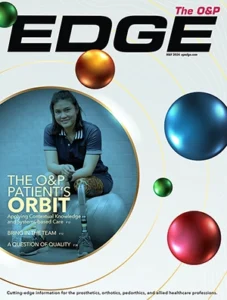Cranial deformation (CD) is a distortion of the head shape resulting from mechanical forces that occur prenatally and postnatally.1
Prenatal forces from things like intrauterine constraint and postnatal forces from things like limited tummy time; prolonged positioning in a car seat or infant carrier; and handling, feeding, and carrying patterns can contribute to CD.2 Decreased cervical range of motion (ROM) can cause infants to develop CD or increase the severity of CD.3 An infant’s motor development can also be impacted by limited tummy time, again contributing to CD.4 CD occurs in just over 90 percent of infants who are diagnosed with congenital muscular torticollis (CMT).5 CD and CMT are caused by similar underlying conditions and, not surprisingly, have similar interventions. Typically, infants with CD and CMT will be treated by an orthotist/prosthetist and a physical therapist. To optimize outcomes, these allied healthcare professionals should take a team approach when caring for patients with CD and CMT.
Support authors and subscribe to content
This is premium stuff. Subscribe to read the entire article.





